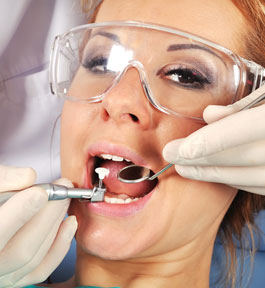If ever you’ve tasted some blood while brushing and flossing or experienced bright red, sore or puffy gums, a rough tooth surface, blunt papilla between teeth, or a sudden onset of a bad odour in the mouth, it is time to visit your dental professional.
An occasional nick with the dental floss is no cause for alarm, but repeated instances of bleeding in the mouth are a clear sign that something is wrong.
There are many reasons one might experience bleeding in the gums but in all cases the main factor is bacteria.
Gingivitis, or a bacterial infection of the gums, occurs when plaque stays in contact with the gum for more than twenty four hours. Gradually this soft white layer will get calcified and forms calculus, which are hard deposits, stick to the teeth and harbourmore bacteria. When the bacteria come into contact with the gums, the gums become inflamed and can appear red, loose and puffy. Sharp edges in the calculus can actually cut the gums and cause bleeding. Once the gum is compromised, it can lead to other larger issues throughout the body as the bacteria can then get into the deeper tissue.
Brushing, flossing and regular hygiene appointments can prevent or even reverse the effects of gum disease. The hygienist or dentist uses a special instrument between the gums and teeth to remove the calculus and clean the teeth and root surface of bacteria. In more severe cases the dentist may prescribe a mouth rinse or antibiotics.
Staying on top of your oral hygiene is key for maintaining a healthy mouth and preventing any serious issues from developing. If you experience any bleeding of the gums, it’s crucial to see your dentist before the infection spreads deep in the gum or even the bone, potentially leading to irreparable damage. Such serious issues are entirely avoidable, however, with regular hygiene appointments and good home care.






